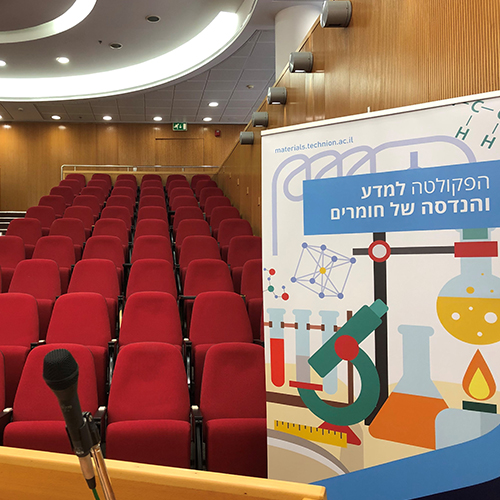
Mr. Asaf Reuven Kazmirsky - M.Sc. Candidate
22/06/2025
ZOOM
13:30
Sintering ceramics under an external electric field can result in faster densification at lower temperatures compared to traditional sintering. As a result, this form of processing has garnered interest. However, densification during sintering is accompanied by grain growth, and the resulting microstructure can significantly influence the material's properties.
Recent studies on pre-densified polycrystalline alumina annealed using spark plasma sintering, a method where the material is sintered under uniaxial pressure in a conducting die carrying an external current, showed an increased grain growth rate in proximity to the negative electrode compared to the positive one. Other studies have demonstrated that doping alumina with calcium (Ca) below the solubility limit results in accelerated and anisotropic grain growth, creating elongated plate-like alumina grains. It is speculated that oxygen vacancies, which serve as charge compensating defects in alumina doped with calcium, might play a role in facilitating grain growth.
In this work, the influence of an applied external electric field on the microstructural evolution of pre-densified undoped and Ca-doped alumina, where grain growth occurs without concurrent densification, was studied. Alumina was prepared using conventional powder processing methods and sintering. Samples were thermally annealed under electric fields of 0, 200, or 300 V/cm using alumina electrodes coated with platinum paste. Electron microscopy was used to measure the average grain size as a function of annealing time. The results confirmed increased grain growth kinetics near the negative electrode. Wavelength-dispersive spectroscopy (WDS) was used to characterize dopant/impurity distributions after annealing, and to determine whether the field influences local concentrations, which could serve to explain the difference in grain growth rates. Possible mechanisms to explain the change in growth kinetics will be presented.


